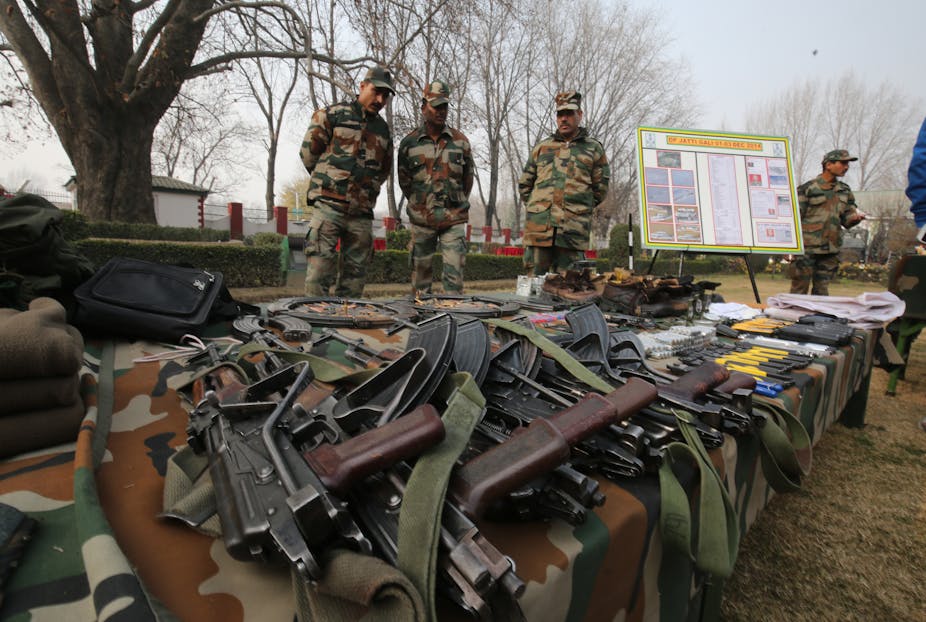On February 23, Trinidad and Tobago will host the first preparatory meeting of the recently adopted Arms Trade Treaty (ATT) – the first real international mechanism to stem the spread of weapons across borders.
Two decades after it was first proposed, and almost ten years of UN resolutions and negotiations, the parties to the treaty have until the end of 2015 to report on national implementation. They will now spend 2015 working in several Preparatory Meetings and Conferences to make proper implementation happen.
But what is the ATT, what is it for, and why has it taken so long to implement?
The ATT is an attempt to regulate the international trade of conventional weapons for the purpose of contributing to international and regional peace, reducing human suffering, and promoting co-operation, transparency and responsible action by and among states.
Its main provisions are to set rules for the transfer (meaning the export, import, transit, trans-shipment and brokering) of conventional weapons – meaning battle tanks, armoured combat vehicles, large-calibre artillery system, combat aircraft, attack helicopters, warships, missiles and missile launchers and small arms and light weapons. Under the treaty’s provisions, national governments will need to examine the risk of these arms being used to commit or facilitate serious acts of gender-based violence or serious acts of violence against women and children.
The states that ratified the ATT must appropriate national measures to enforce the treaty’s provisions. Countries will also need to provide an annual control list of their transfers to be available to other members and in some cases to the general public.
Welfare for humans
In principle, the treaty is nothing new. Attempts to regulate the global arms trade have been made since at least the late 19th century, and many countries (including the US) have had their own export control regulations in place for many years.
But the thinking behind the current treaty really came into focus after the end of the Cold War. Along with the fall of the Eastern bloc came the rise of the school of thought known as “human security”, which holds that the object of national security should be the individual, not the state.
This shift led to a rise of the humanitarian arms control agenda, and in turn, to pressure for a global mechanism of binding international arms control.
But making the welfare of humans, rather than the protection of states, the main rationale for of a major security treaty has been difficult for some countries to accept – and this is one of the main reasons why it has taken so long to put into place.
Who’s signed up?
As of February 2015, 62 states have ratified the ATT, including five of the world’s top ten arms producers: the UK, France, Germany, Italy and Spain.
As the states meet in Trinidad and Tobago and continue to meet throughout 2015, they face many challenges to ensure a proper implementation of the treaty. Like the decision of choosing a host for the Arms Trade Secretariat (a close-run contest between Trinidad and Tobago, Austria and Switzerland) or ensuring that states are aware of their obligations.
The US, meanwhile, has had a changing attitude toward the ATT. George W Bush’s administration opposed it, and cast the lone vote against it at the 2006 UN General Assembly. Barack Obama has showed support since the start of his presidency, even as he’s also eased the US’s own rules on arms exports.

The US government finally signed the treaty in September 2013, assuring that it “would never think about supporting a treaty that is inconsistent with the rights of Americans citizens to be able to exercise their guaranteed rights under our constitution.”
The US’s position in the worldwide arms industry is crucial. It is the world’s top arms producer and the largest exporter of fire arms, and its arms industry is very powerful, and supports presidential campaigns through political donations. Meanwhile, military companies and organisations such as the National Rifle Association exert a very strong lobbying influence in Congress. All this means the chances of the ATT attaining ratification in Washington are slim.
Will it work?
Still, the ATT has got to the threshold of enforcement without the US’s ratification. That in itself is not unusual; many global treaties have been implemented relatively successfully without the US’s involvement, such as the Mine Ban Treaty and Convention on Cluster Munitions.
But the US has not been the only major power left out of the ATT. Russia and China, two of the top three world’s largest exporters of arms, have abstained, and this may mean its implementation will not be as effective as had been hoped.
Even though the importance of these major powers is undeniable, it’s also not unusual in terms of international standards and controls. Norms such as arms control will continue to be created simply because the needs of the international society demand them – and that in itself will exert a strong pull effect on even the most powerful arms producers. Perhaps it’s a case of waiting for a treaty to change the state, instead of the state to change (or ratify) the treaty.

